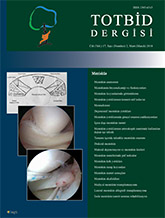
Conservative treatment is a method of treatment that is sometimes referred to in meniscal tears. In addition to activity restriction and physical therapy, nonsteroidal antiinflammatory drugs may also be used in treatment. The purpose of physical therapy is to maintain full range of motion, to preserve muscle strength and joint proprioception. The main goal of treatment in meniscus lesions is to eliminate the acute symptoms, restore normal knee function, and prevent recurrent meniscal lesions in the future. When a conservative treatment decision was made, the location of the tear, the elapsed time after injury, and the type of tear should be considered.
Because blood flow is present in only 10–25% of peripheral area of the meniscus, the central area of meniscus is less likely to recover even with the surgical methods. Therefore, the location of lesion is very important. Acute tears are more likely to result in overloading in sport injuries, while chronic tears may occur after minor traumas in the degenerated meniscus. On the other hand, degenerative ruptures are poorly healed due to limited blood circulation. Nevertheless, the outcomes of conservative treatment programs applied after meniscus lesions in the middle-aged patients, in whom degenerative tears are common, were found close to those in the patients who underwent partial meniscectomy. Conservative treatment may also be successful in stable incomplete rupture in the peripheral meniscus, while non-operative treatment has no place in the bucket handle displaced meniscal ruptures. Furthermore, conservative treatment results are quite satisfactory in the horizontal meniscal tears, because the peripheral circumferential fibrils preserve the integrity of meniscus. The superiority of surgical treatment has not been demonstrated in the middle-aged and elderly patients with meniscal tears unless there are mechanical symptoms present.